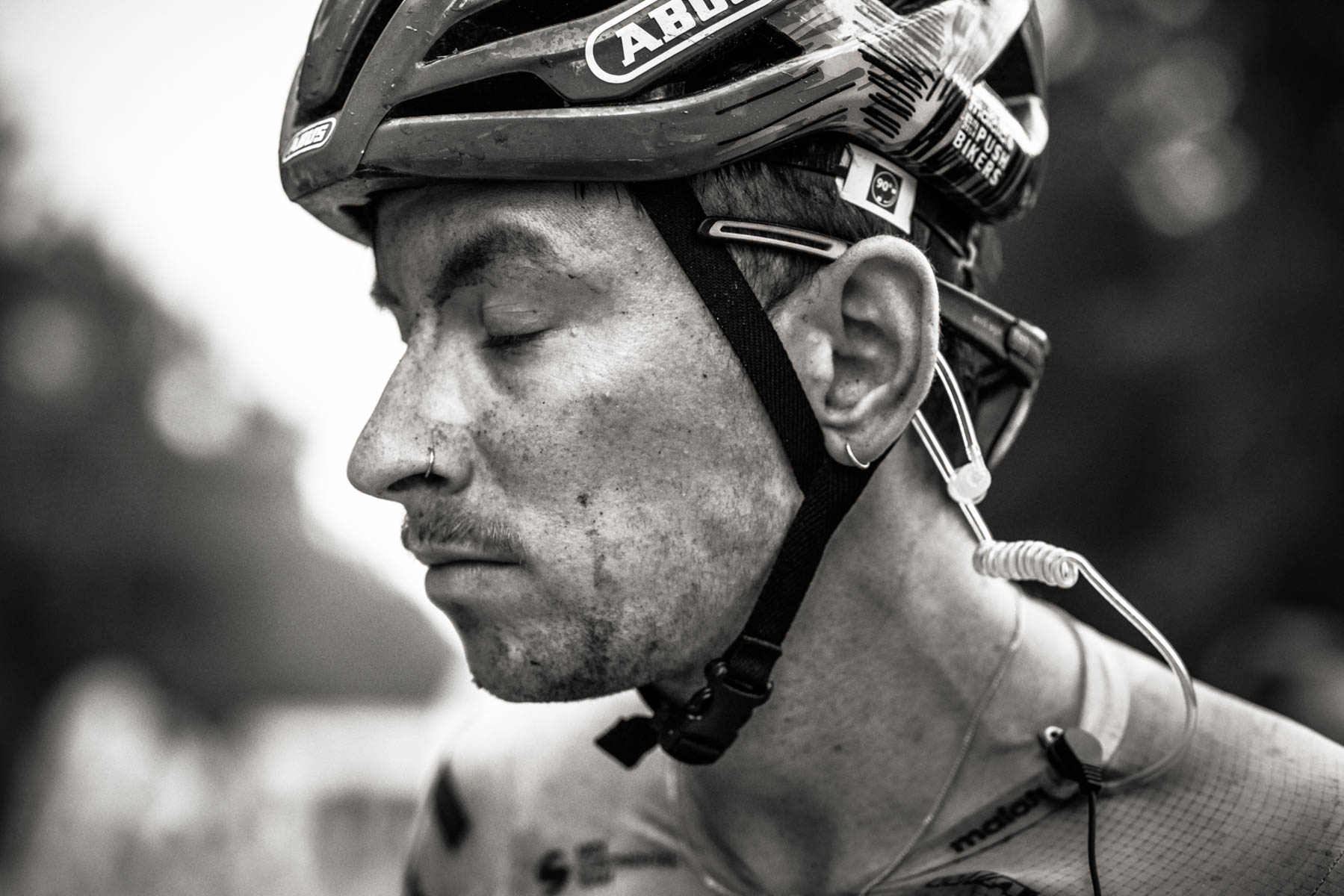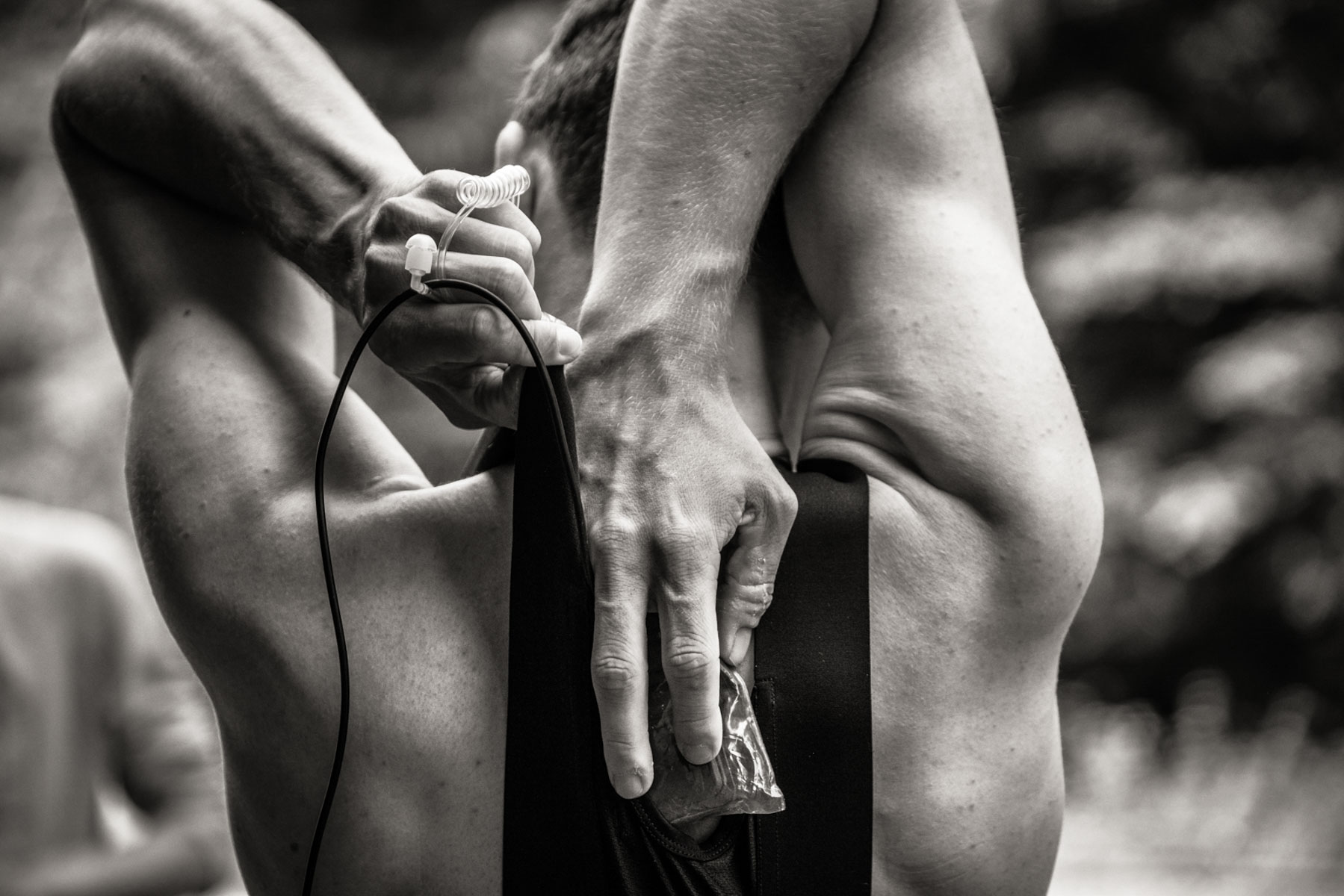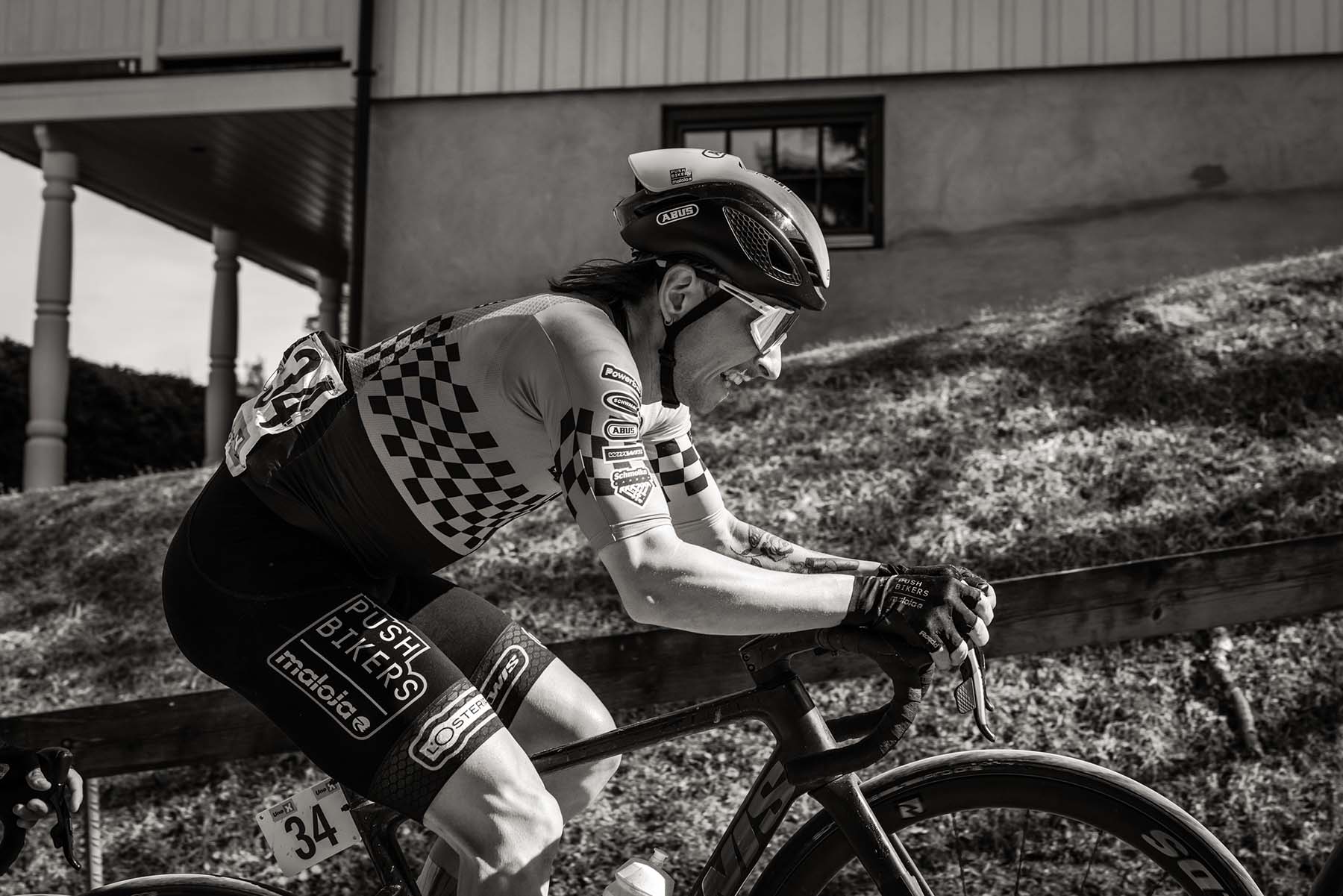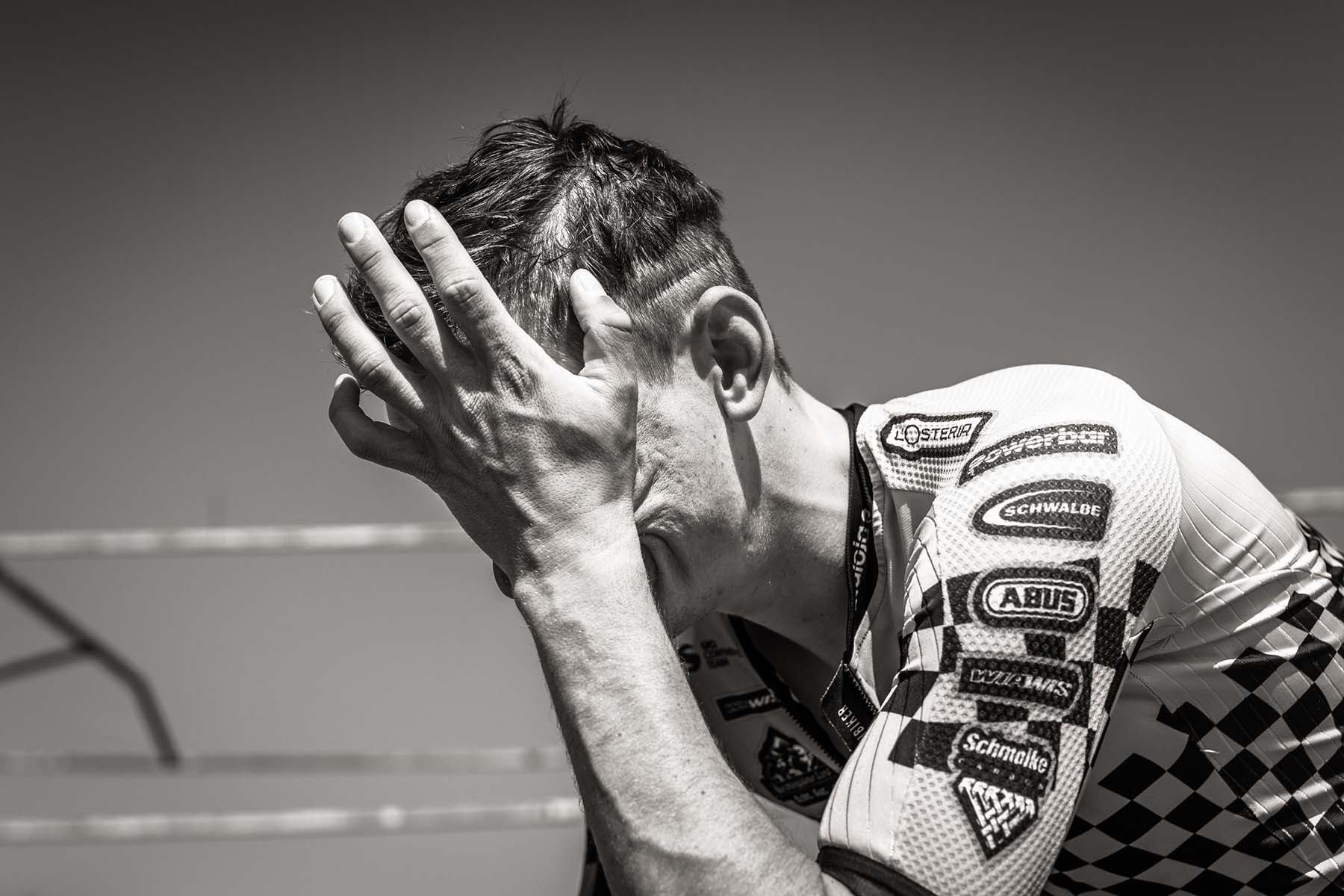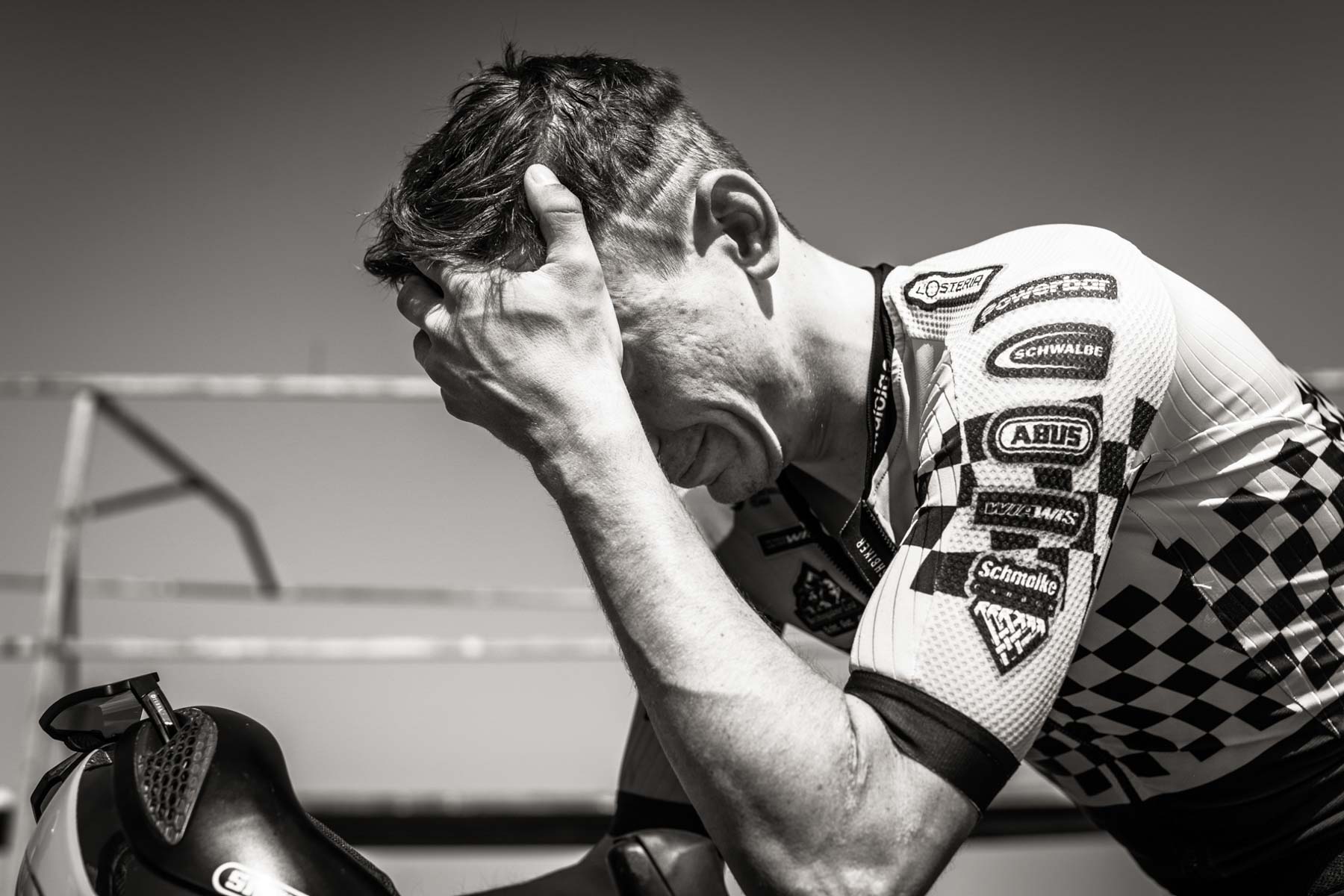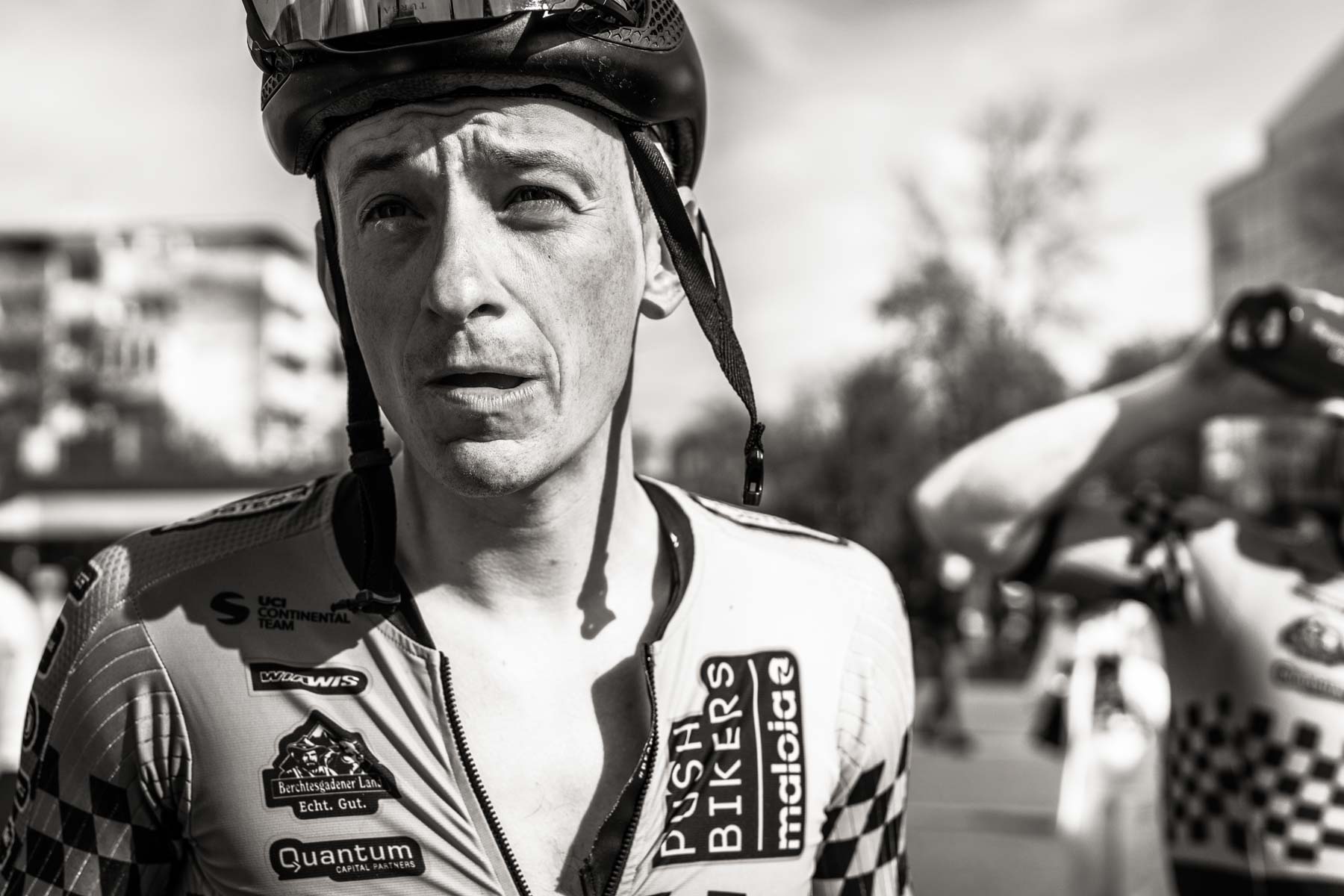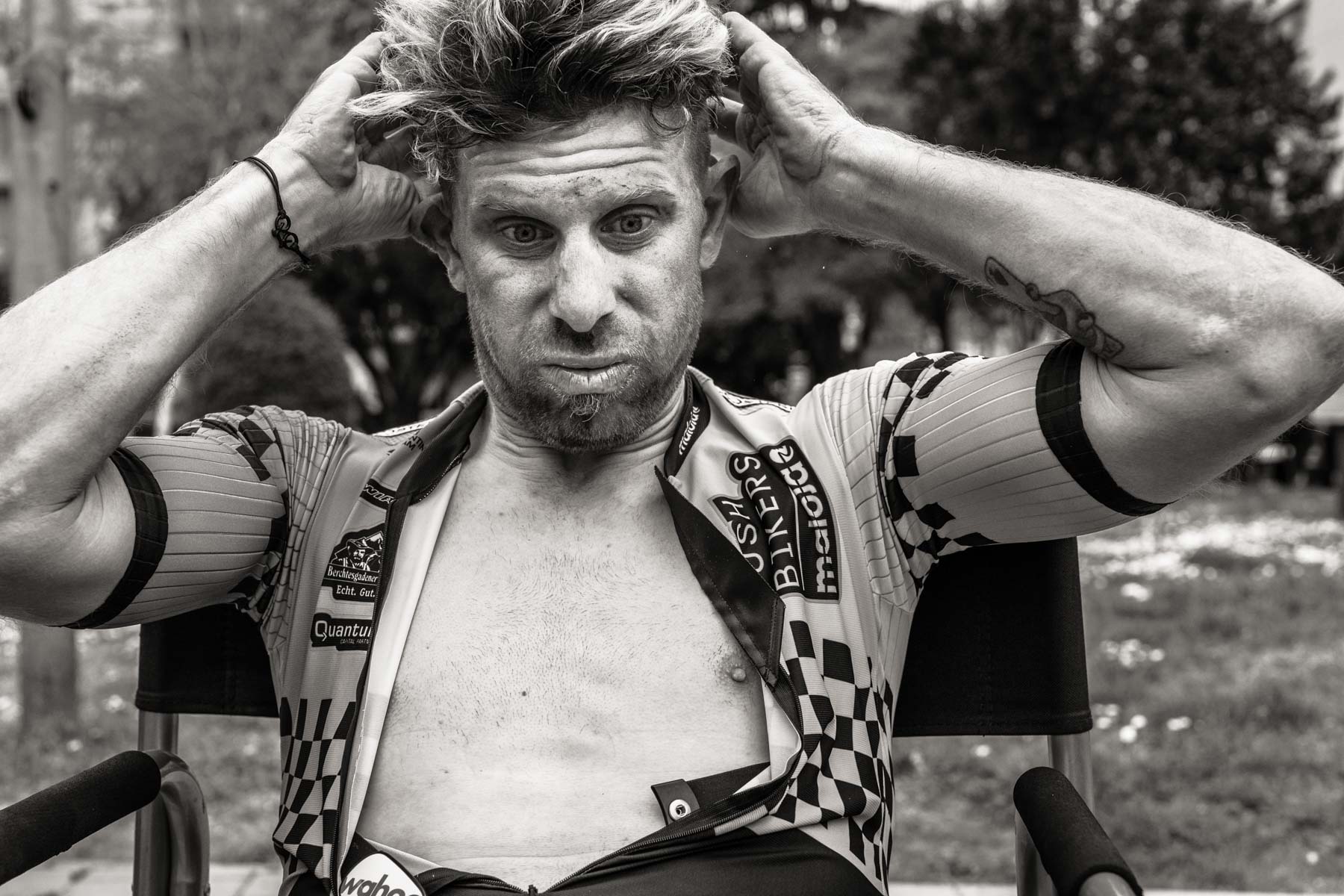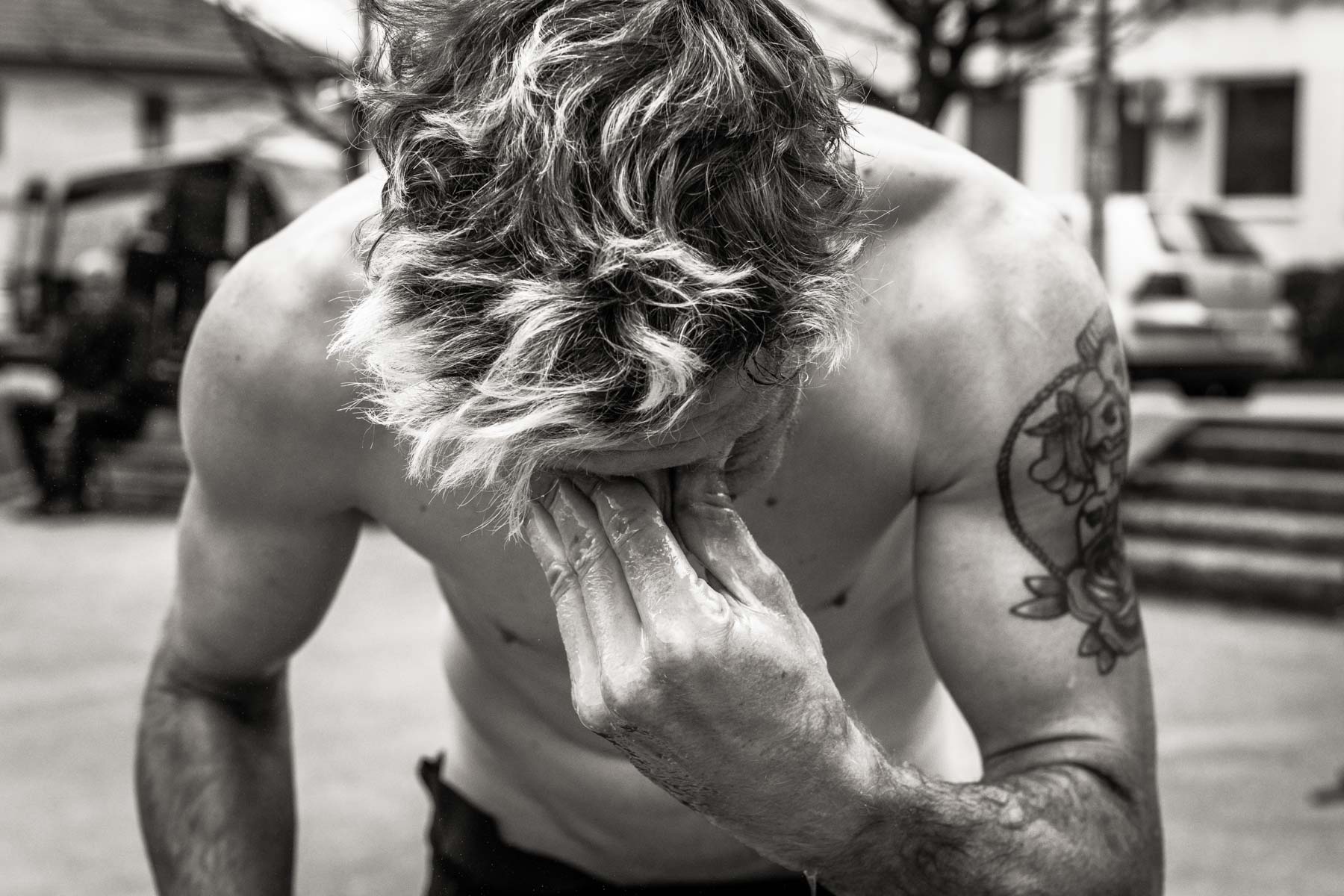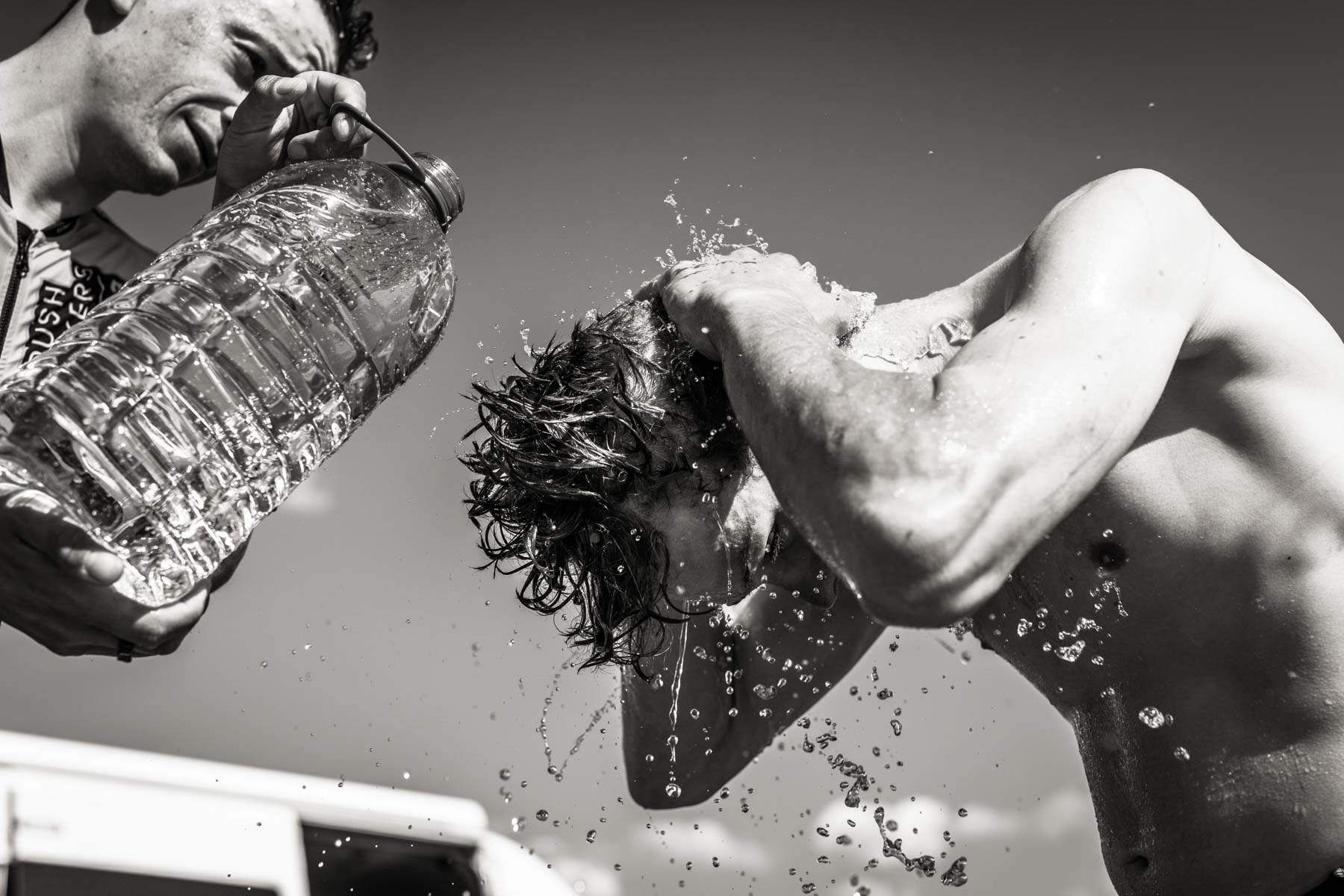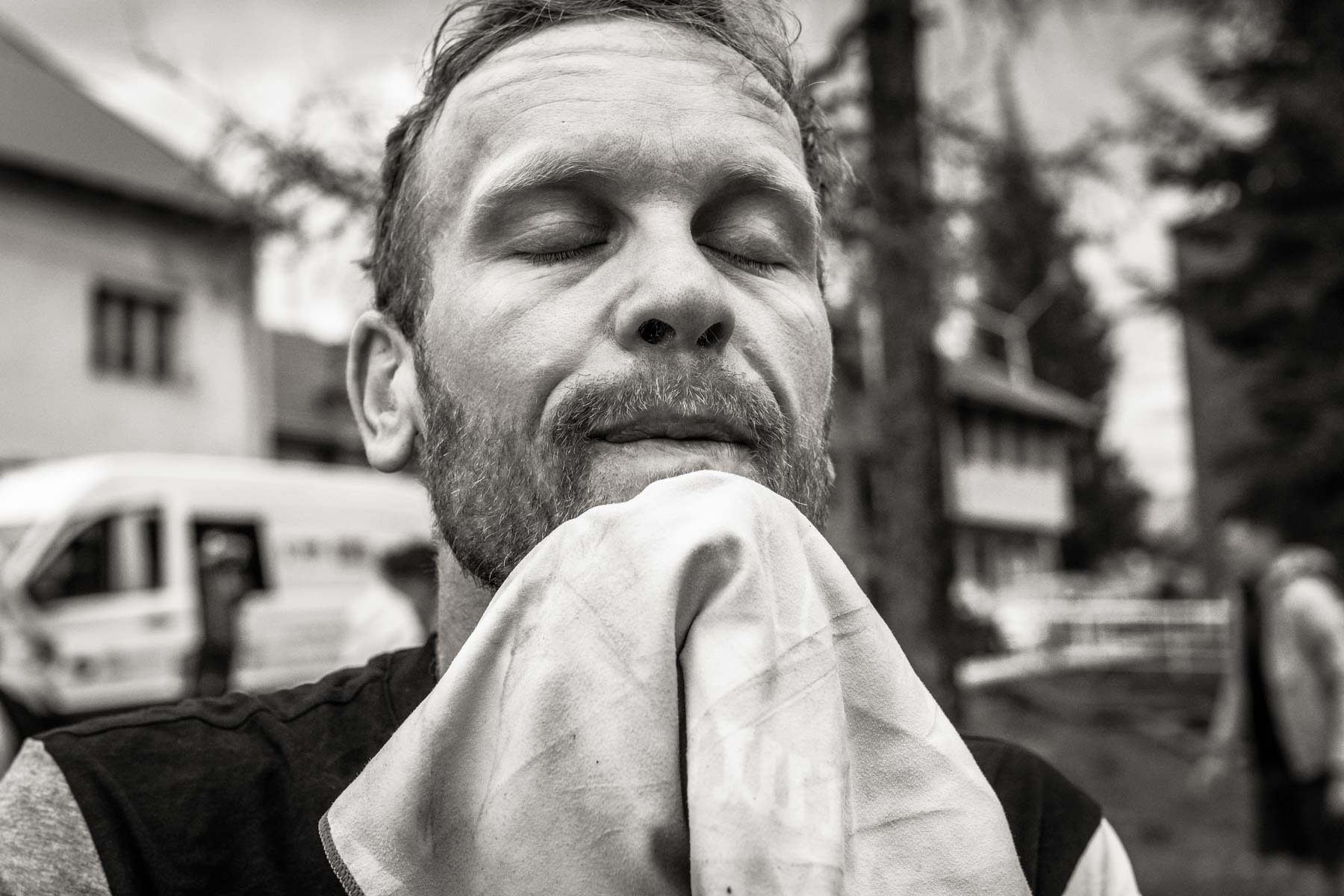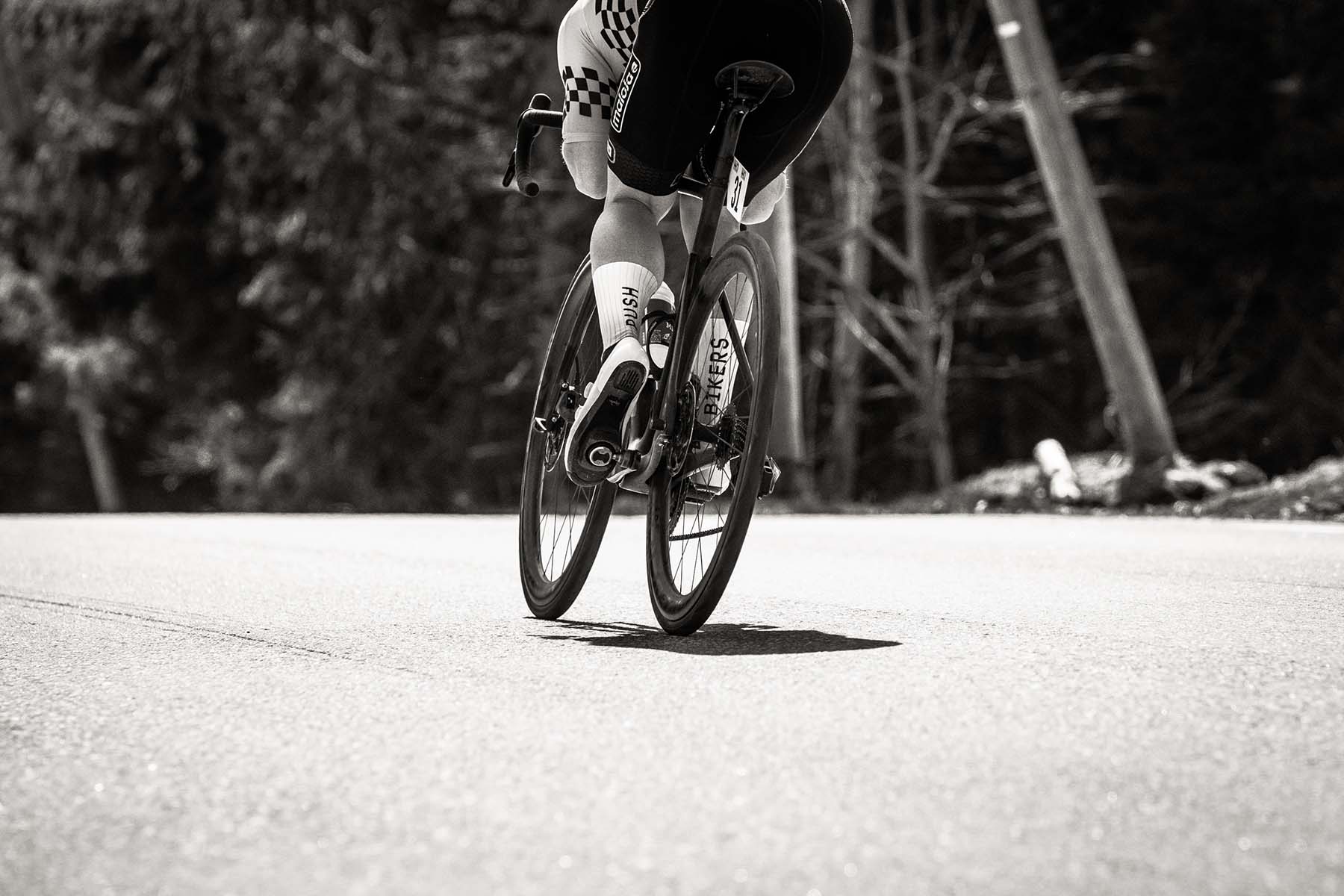Even more than other sports, cycling has always fetishized pain. Not just the suffering of physical exertion, but also the more personal victories over the elements or misfortune. *
Suffering seems to be as much the basis of cycling as joy. In itself incomprehensible, because why should one be enthusiastic about something that brings pain, resembles a struggle and always requires overcoming – getting back up after a crash, continuing to pedal even if you can no longer feel your own feet from the cold, winning a race with broken bones.
Suffering and pain comes at all diferent levels: at the Giro as well as during stage races of the Europe Tour. It is a subjective, yet never-ending discourse that also occupies the Pushbikers at the beginning of the road season. Not least because it confronts us visually: in photographs, in captured moments of our racing days in Eastern Europe, for example. This is not only about the extremes in cycling – to heroise pain, so to speak, to feel it as affirmation – but also in the representation of these moments. Detached from colour, reduced to the essential.
If one follows the argumentation of the French writer and philosopher Simone de Beauvoir, then the body is an instrument with which we can individually access the world, experience it. The feeling of pain and overcoming it can become an experiential value to strive for. And at that point we return to cycling: “Cycling aestheticises suffering and enables one to imagine that one’s struggles serve a greater purpose,” as the former Pro cyclist James Hilton Hibbard puts it. He refers to the phrases cyclists often use when talking about how they go beyond the limits of their bodies: turning yourself inside out.Bringing one’s inner self to the outside. “Strange as it may sound, this phrase expresses something fundamental about suffering on the bike: you don’t just exert yourself, like when you dig a hole, chop wood or struggle with a physical task. When you suffer on a bike, you bring to bear the full depth of everything you are and have ever felt. “*
“He crossed the finish line one minute or so after the bunch. I caught up with him a few moments later, not knowing what his day had been like. Had he been in front all day pulling? I was left in the dark, as I had to battle my way through to the finish line in a completely different race; the off-course by car on abominable Bosnian roads, obstructed by oppressive police and suicidal drivers. Was he tired? Of course he was, but like… wasted. Spent. Empty. Totally f*****, you know. Or was he disappointed? The team happened to miss out on a GC podium spot, so that would be quite reasonable. Frustrated, maybe? Angry, because of a lost opportunity?
Sometimes, the body language of a professional athlete is difficult to read. There might be a thousand different things going on at the same time during those first minutes after crossing the finish line, and being in the mix of things for over a decade has learnt me to keep a certain distance. I wanted to give him a pat on the back and tell him he should be proud nonetheless, but it could have been a wrong choice of words.
So, I kept my mouth shut and took these photos, almost like a thief. My inadequate response to this infinite moment.”
Kåre Dehlie Thorstad
Pedalling to the limit. Inhale, exhale, keep turning the pedal. Metre by metre. Everyday things disappear. The surroundings fade away, you stop thinking. Everything is reduced to the essential. Is that what makes cycling so beautiful, right up to the moment when the pain starts – and beyond? When one reaches the point of “making it possible to imagine that your struggles too are in the service of some greater purpose”* ?
And what does it mean for the one who tries to depict this moment: he, too, must go for the essential. Concentrate on the feelings, the facial expression, the intuition. Narrowing down all information to make the image as understandable as possible for the viewer. Make the picture as “empty” as the condition of the cyclist himself. Showing what remains when even colour is removed.
Some things cannot exist in a status of in-between. And thus pain cannot be grey, it can only be black or white. Only in the extreme can certain phenomena be understood. And that is the only way they can be presented.
— * James Hamilton Hibbard
From The Art of Cycling, to be read online via Soigneur
— Simone de Beauvoir
The Second Sex
